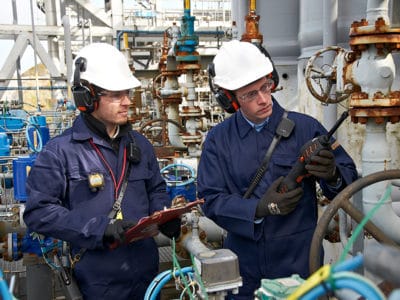
Benzene Detection – Fixed Instruments
Fixed PIDs protect workers and the public from benzene exposure
When the Coronavirus lockdowns eventually end, air pollution could return with a vengeance and human exposure to benzene has been associated with a range of acute and long-term adverse health effects and diseases, including cancer and aplastic anaemia. Leading manufacturer of gas detection instrumentation for occupational health and environmental monitoring applications, ION Science is helping to protect employees and the public from exposure to this harmful volatile organic compound (VOC) with its high performance fixed photoionisation detectors (PIDs).
Benzene Properties
Benzene, also known as benzol, is a common VOC identified by its unique numerical CAS number 71-42-2
It is also a hydrocarbon and belongs to the Benzene, Toluene, Ethylbenzene & Xylene (BTEX) family of aromatics. It is a highly flammable colourless to light yellow liquid which occurs naturally in crude oil, natural gas and some ground waters.
Benzene is found in ambient air as a result of burning fuels, such as coal, petrol and wood, plus is common in unleaded fuel, where it is added as a substitute for lead. It is also found in cigarette smoke.
”It is advisable to use an appropriate form of monitoring and ION Science offers several fixed instruments including its worlds first FalcoTAC fixed PID with 10.0eV lamp, which offers fast and reliable detection of high toxic aromatic compounds (TACs), including benzene, in-high humidity environments.
ION Science LtdFalcoTAC Fixed Gas Monitor
FalcoTAC Fixed Gas Monitor
Designed for plant wide safety and the on-going protection of workers in global petrochemical and oil and gas applications, the new FalcoTAC instrument also boasts the company’s innovative typhoon technology for unrivalled accuracy in condensing atmospheres and extreme weather conditions.
Utilising ION Science’s proprietary high output 10.0 eV detection system, the FalcoTAC VOC monitor offers a detection range of 0.01 – 50 parts per million (ppm), fast response times and the best possible protection for plant personnel, giving early warning of exposure to harmful levels of benzene.
Titan Benzene Specific Monitor
As the world’s first continuous, real-time benzene specific monitor, ION Science’s wall-mounted ‘Titan’ is capable of providing fast, accurate and reliable monitoring of ambient benzene in a wide variety of applications both on site, in process areas or along a boundary or fence line. Providing significant value for money, it tracks exposure in real-time and automatically logs data.
Traditional PIDs identify benzene as well as other less harmful VOCs often present at the same time. Incorporating the well proven ION Science MiniPID 2 technology, the highly sensitive Titan samples and analyses the environment to provide continuous feedback of ambient benzene levels. When a sample is taken, the benzene component is chemically filtered using a robust separation technology.
Download our FREE Guide
“Benzene Detection (Fixed Instruments) – Fixed PIDs protect workers and the public from benzene exposure”
The following Guide provides the reader with knowledge on the two different types of fixed benzene detectors, the high performance FalcoTAC and Titan fixed instruments offer fast and reliable detection of benzene. Workers can be exposed to benzene in a wide range of industries, including oil refineries, chemical and petrochemical plants, coke works, foundries and the storage, distribution and use of petrol or benzene itself.












 United Kingdom
United Kingdom






